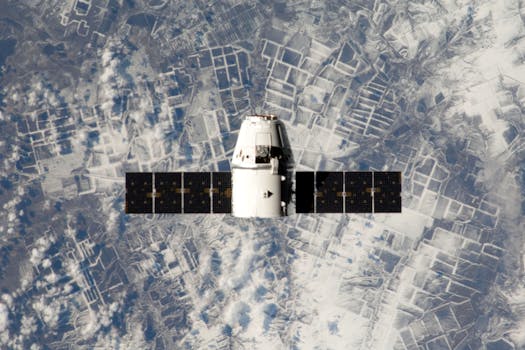
GEO Satellites: The Backbone of Global Communications
GEO satellites, or Geostationary Earth Orbit satellites, are a type of satellite that orbits the Earth at an altitude of approximately 36,000 kilometers, remaining stationary relative to a fixed point on the equator. This unique characteristic allows GEO satellites to provide continuous coverage of a specific region, making them an essential component of modern communications infrastructure.
GEO satellites have been in use for decades, with the first commercial GEO satellite, Intelsat 1, launched in 1965. Since then, the technology has evolved significantly, with advancements in satellite design, launch vehicles, and ground equipment. Today, GEO satellites play a vital role in facilitating global communications, providing connectivity to remote and underserved areas, and enabling a wide range of applications, from telecommunications to weather forecasting.
Applications of GEO Satellites
GEO satellites have a wide range of applications, including telecommunications, broadcasting, weather forecasting, and navigation. They are used to provide internet connectivity, voice and data services, and television broadcasting to remote and underserved areas, where traditional infrastructure is limited or non-existent. GEO satellites are also used for weather forecasting, providing critical data on atmospheric conditions, ocean currents, and climate patterns.
In addition to these applications, GEO satellites are used for navigation, providing location information and timing signals for GPS and other navigation systems. They are also used for Earth observation, monitoring environmental changes, and tracking natural disasters such as hurricanes, wildfires, and earthquakes.
Benefits of GEO Satellites
GEO satellites offer several benefits, including global coverage, high-bandwidth connectivity, and reliability. They provide continuous coverage of a specific region, making them ideal for applications that require constant connectivity, such as telecommunications and broadcasting. GEO satellites also offer high-bandwidth connectivity, enabling the transmission of large amounts of data, voice, and video traffic.
In addition to these benefits, GEO satellites are highly reliable, with a typical lifespan of 15-20 years. They are also relatively low maintenance, requiring only periodic adjustments to their orbit and attitude. This makes them an attractive option for applications where reliability and low maintenance are critical, such as telecommunications and navigation.
Challenges and Limitations of GEO Satellites
Despite their many benefits, GEO satellites also have several challenges and limitations. One of the main challenges is the high cost of launching and operating a GEO satellite, which can range from hundreds of millions to billions of dollars. This makes them inaccessible to many organizations and individuals, limiting their adoption and use.
Another challenge is the limited bandwidth availability, which can lead to congestion and interference. This can result in reduced connectivity speeds and increased latency, making it difficult to support high-bandwidth applications such as video streaming and online gaming.
In addition to these challenges, GEO satellites are also subject to interference from other satellites and terrestrial systems, which can disrupt their operation and cause errors. This requires careful planning and coordination to minimize interference and ensure reliable operation.
Future of GEO Satellites
Despite the challenges and limitations, the future of GEO satellites looks promising. Advances in technology are expected to improve their performance, capacity, and affordability, making them more accessible to a wider range of applications and users. The development of new satellite constellations, such as OneWeb and Amazon Kuiper, is expected to increase the availability of GEO satellites and reduce their cost.
In addition to these developments, the use of GEO satellites is expected to expand into new areas, such as the Internet of Things (IoT), autonomous vehicles, and smart cities. They will play a critical role in enabling these applications, providing the connectivity and data needed to support their operation.






